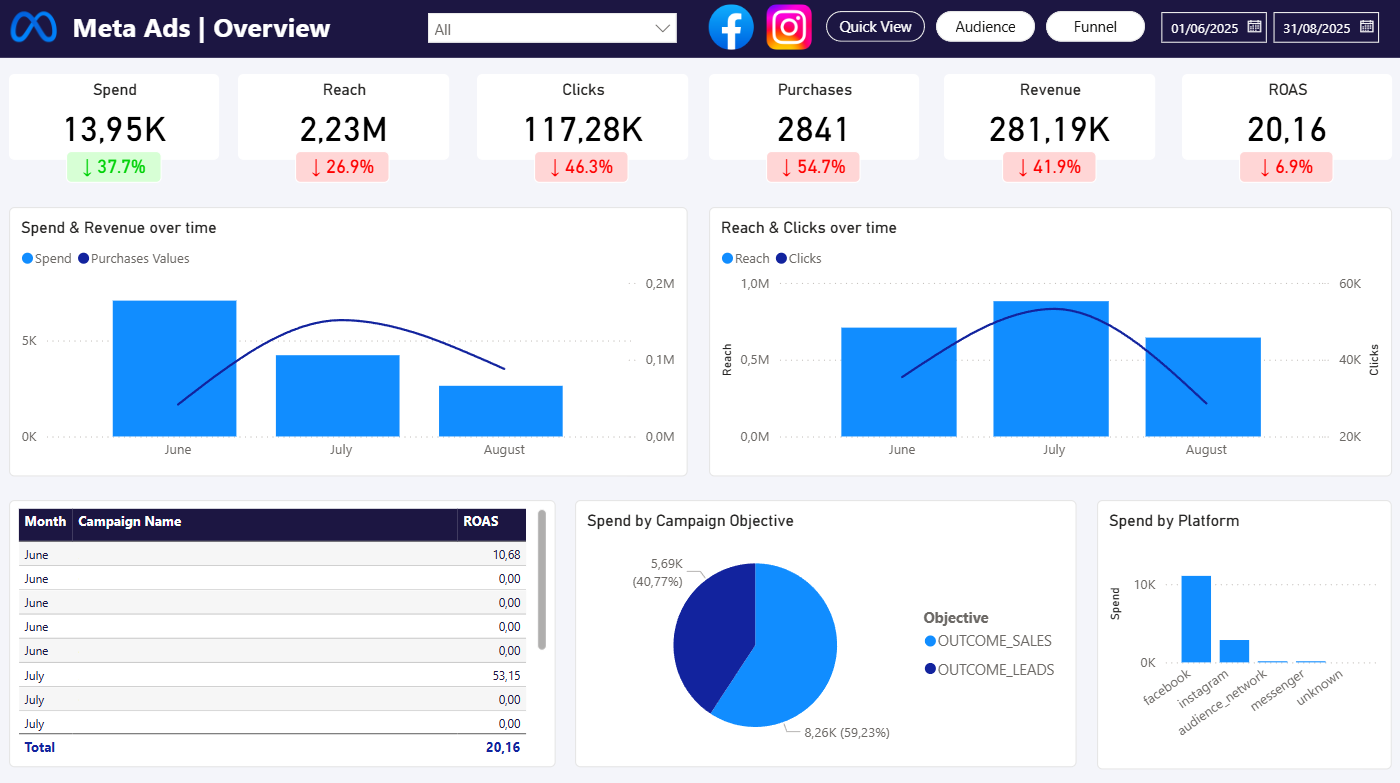Blog post
Catchr
Google Sheets
Facebook Ads

By importing data from Facebook Ads to Google Sheets, you can make custom reports, see how your data looks, and make better marketing decisions. In this blog post, we will show you how to use the Catchr Add-on for Google Sheets to import your Facebook Ads data easily and efficiently.
Now that you have the Google Sheet Add-on installed, you can create your first query with it. But before that, we will review all the different configurations to which you have access when you create a query.

In the source listing, you could select any marketing platform you want to connect. In this case, we will use Facebook Ads, but you could also connect Microsoft Ads, Google Ads, etc. We have more than twenty marketing sources at the moment and plan to add a lot more.
If you have no account for the source, you can click on the “+” button and add the source from app.catchr.io.

Once you have selected a source, you can select the account you want to work with. You can select one or more accounts and execute all your queries on them.

On the metrics tabs, you will find all the metrics accessible from the Facebook Ads API. It includes the basics, like “clicks”, “spend”, and “impressions”, but also more specific things like “mobile app checkouts” or “purchases”.

Like the metrics tabs, the dimensions tabs gave you the power to select which dimension you wanted to work on. By way of example, if you want all the impressions by campaign and day, you need to put “Impressions” in the metrics tabs and “Day” and “campaign name” in the dimension fields.

You could find all the metrics available for Facebook in the fields listing page.
In the date range tab, you can select the date range for your report. There are presets available, like "Last month" and "This year" but you can also add custom date range.

The filters gave you a way to filter the data you wanted to work on. If you only need your branding campaign, you could easily put the name or the pattern of the campaign in the filter.

Please, note that successive filters combine with a AND logical operator.
Catchr Add-on provides several options to help work with data from Facebook Ads:

Now that you know how to create a query, let start creating your first report.
Using the Catchr Add-on for Google Sheets, you can create a custom report that provides insights into your Facebook Ads performance. For example, you could create a report that shows the top-performing ad sets in terms of conversions and return on ad spend (ROAS).
To create this report, you would:
You will saw something like :

This report would give you a clear overview of which ad sets are driving the most conversions and delivering the best ROAS. You could then use this information to optimize your Facebook Ads campaigns and allocate your budget more effectively.

Start using Looker Studio with a ready-to-use template
Get the template
Start analyzing your data with a Looker Studio template
Catchr provides free dashboard templates to help you start analyzing your data on Looker Studio — 100+ available templates!
See all the Looker Studio templates
Start using Power BI with a ready-to-use template
Get the template
Start analyzing your data with a Power BI template
Catchr provides free dashboard templates to help you start analyzing your data on Power BI — 20+ available templates!
See all the Power BI templates
Start using Google Sheets with a ready-to-use template
Get the template
Start analyzing your data with a Google Sheets template
Catchr provides free dashboard templates to help you start analyzing your data on Google Sheets — 20+ available templates!
See all the Google Sheets templates✔ 14 days free trial — No credit-card required





✔ 14 days free trial — No credit-card required

Move your Marketing data to your favorite tools
Simplify your data extraction and move all your Marketing data to dashboard tools, spreadsheets, database and more... No code required!
75+ connectors | 20+ destinations
✔ 14 days free trial — No credit-card required

